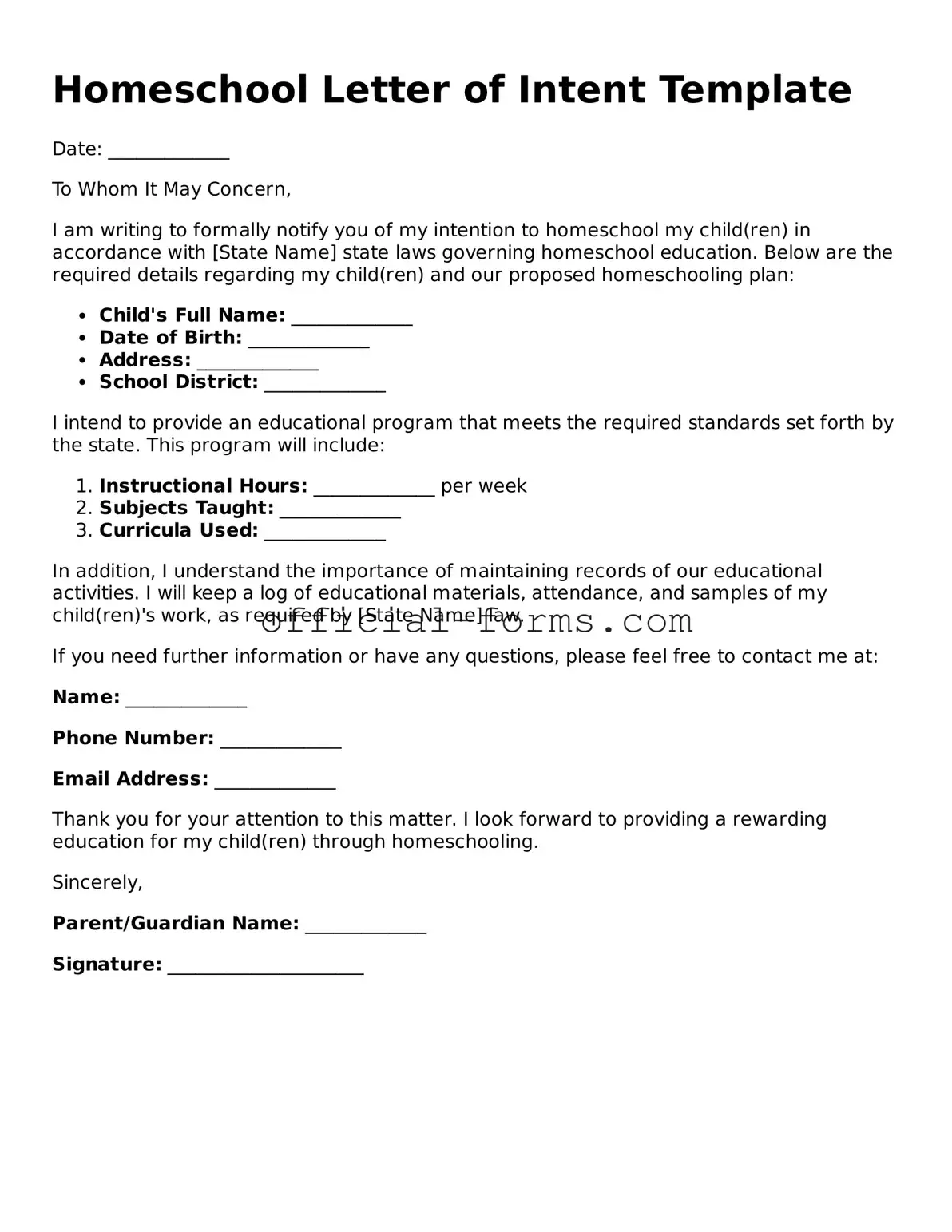Filling out the Homeschool Letter of Intent form can be a straightforward process, but many people make common mistakes that can lead to delays or complications. One frequent error is not providing all the required information. Each state has specific requirements, and omitting details can result in the form being rejected. Always double-check the requirements for your state to ensure you include everything needed.
Another mistake is failing to sign and date the form. A signature is often required to validate the intent to homeschool. Without it, the form may be considered incomplete. Make sure to review the form carefully before submitting it to ensure you’ve signed where necessary.
Some individuals also forget to submit the form by the deadline. Each state has its own timeline for when the Letter of Intent must be filed. Missing this deadline can lead to complications, such as being unable to legally homeschool for that school year. Mark your calendar and set reminders to avoid this issue.
Inaccurate information is another common pitfall. Some parents may mistakenly list the wrong school year or provide incorrect details about their child’s educational background. This can raise red flags and lead to additional scrutiny. Always verify the information you provide to ensure accuracy.
Many people also overlook the importance of keeping a copy of the submitted form. Having a record of what you sent can be crucial if questions arise later. It’s a good practice to maintain copies of all important documents related to homeschooling.
Another mistake is not checking for spelling and grammatical errors. While this may seem minor, clear communication is important. Errors can make the form look unprofessional and may cause confusion. Take a moment to proofread before submission.
Some parents might forget to include any additional documentation that may be required. Depending on the state, you may need to attach proof of residency or other supporting documents. Always review the instructions carefully to ensure you’ve included everything needed.
Failing to update the Letter of Intent when circumstances change is also a mistake. If your child’s educational situation changes, such as a move or a change in curriculum, you may need to submit an updated form. Staying proactive can help avoid legal issues down the line.
Lastly, some individuals may not take the time to research their state’s homeschooling laws thoroughly. Each state has different regulations and requirements. Understanding these laws is essential to ensure compliance and to make the homeschooling experience as smooth as possible.
